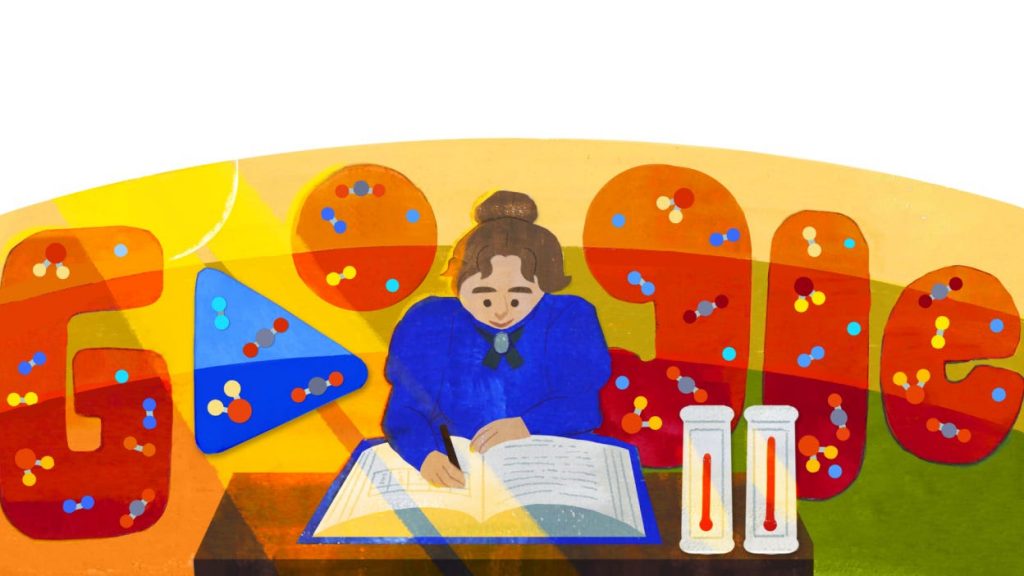
Hello again Science fans!
Have you ever heard of Eunice Foote? No? She’s someone we all should know more about, and she was the subject of the Google Doodle on July 17th (pictured above), on what would have been her 204th birthday!
Eunice was a women’s rights activist. She was the first woman to be published in a physics journal. In 1856 she wrote “Circumstances Affecting the Heat of Sun’s Rays”, a paper that laid out the basics of climate science. Three years after the publication, scientist John Tyndall would be credited for laying this groundwork, not Foote. It wasn’t until the 2010s that her work began to be recognized.
Unfortunately, there are many, many more stories like Eunice Foote’s. Here is more about her, and the work Google is doing to support current research on climate change.
Being skeptical of all you hear and read, especially online, is important. Not only do we need to be alert for scams and half truths, but we need to teach our young people how to do so for themselves. On Wednesday, the Florida Board of Education approved new social studies standards. On the surface, the standards don’t look so bad. But dig a little deeper and you will see a disturbing pattern of racisim and a rewriting of history. Professor Heather Cox Richardson, whom I’ve linked to before, looks at this new standard and points out what can only be called whitewashing. I find it ironic that those on the right who call out “wokeness”, are guilty of doing the things they seem to be against. Here’s Dr. Richardson’s analysis.
In the realm of politics, several incidents have occurred where the right (notably Alabama and Texas) are defying court orders to implement their version of how they see the world. Another link to Dr. Richardson’s reporting of these events.
Yesterday, I returned from an extended road trip to the eastern US and back. While I missed the extreme heat in the southwest and most of the Canadian smoke in the northeast, I didn’t miss all of it. Each time I take such a trip, I’m struck by the variety of the landscapes I traverse. The US has a beautiful, diverse geography. The high deserts of Arizona and New Mexico, the transition to green forests in Alabama and Tennessee, the mountains of NW North Carolina and West Virginia, the rolling corn and soybean fields in Iowa and Nebraska, the transition to grasslands in Wyoming, and, of course, the diversity of California. The scenery seems to change every few hours, and I find it peaceful to take it all in as I travel across the country. I visited with friends, some of whom I hadn’t seen in 28 years! I took part in an annual sporting event where I have volunteered for 47 years. It was a wonderful journey, but I’m glad to be back home today, writing the Schmooze!
So, let’s get on with it!
Have you heard about Sea Otter 841? She’s been snatching surfboards from surfers, chasing them off their boards and into the water. So far, authorities have been unable to capture her. Yes, she’s adorable, but she’s also aggressive and dangerous to surfers.
Scientists at Purdue University have invented a white paint that reflects up to 98% of the Sun’s heat back into the atmosphere, cooling the surface it covers. We need more ideas like this!
The James Webb Space Telescope has been in operation for a year now (already?!). NASA released another breathtaking image, this time of the Rho Ophiuchi stellar nursery. Not all the amazing images come from JWST though. Here are ten images from the Astronomy Photographer of the Year awards. The winners have not been announced yet, but these ten are amazing.
Rare Earth minerals are used in all sorts of high tech devices, from TVs to computers to batteries. To date, most of these minerals come from China, and therein lies a political problem. As the Western world struggles with China’s policies, any threat to cut off the world supply would cause alarm. Now Sweden had found a huge deposit of such minerals in an iron ore mine in Kiruna, Sweden’s northern-most city.
Meanwhile, in Bavaria, hops, which are grown for beer, are flourishing when grown under solar panels! Other crops also seem to produce more when under such panels, giving dual usage to the acreage. Here in California, Solar AquaGrid is about to cover some of our water canals with solar panels. Doing so will not only generate electricity, but could save as much as 63 billion gallons of water a year from evaporating if all 4,000 miles of our canals were covered.
Here in California we have an Earthquake Early Warning system that can provide valuable seconds of warning when a large earthquake strikes. By analyzing seismometer data from many such quakes, scientists found a pattern of fault motion up to two hours before the main quake. This discovery may lead to better early warning systems.
Have a great week in Science!
Bob
Upcoming Events:
Click to see the next two weeks of events in your browser.
